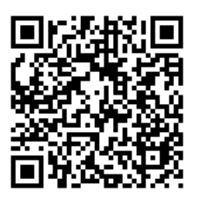Technology
5 February, 2025
- A modest rise in gold volumes used in electronics in Q4 (+3% y/y to 70t) drove growth in the broader technology sector during the quarter (+2% y/y to 84t)
- Full-year technology demand increased 7% to 326t
- Much of this recovery was driven by strong demand for high-end AI infrastructure, bolstering a subdued but gradually recovering, consumer electronics market.
| Tonnes | 2023 | 2024 | Year-on-year % change |
|
| Technology | 305.2 | 326.1 | 7 |

|
| Electronics | 248.7 | 270.6 | 9 |

|
| Other Industrial | 47.1 | 46.5 | -1 |

|
| Dentistry | 9.4 | 8.9 | -5 |

|
A solid final quarter completed an improved year of gold demand in the technology sector. During 2024 electronics demand (the dominant category of demand in this sector) was bolstered by ongoing strength in AI-related applications and some recovery in the consumer electronics markets after a particularly weak 2023. Leading market analysis firm, IDC, estimates that smartphone shipments grew by 6% in 2024.1 This was driven by “super aggressive” growth among Chinese vendors focusing on sales of low-end devices within China and to emerging markets. As a result both Apple and Samsung – whose high-end products tend to contain more gold – saw y/y market share decline. IDC forecasts ongoing growth during 2025, albeit at a slower pace. Gartner has reported a similar trend in the PC and laptop market, with demand expected to continue improving in 2025.2
Electronics
Gold demand in the electronics sector rose by 3% y/y to 70t during Q4, with full year demand rising by 9% to 271t. This recovery underlines the growing importance of AI applications to gold demand in the sector.
Gold used in printed circuit boards (PCB) saw a y/y increase during Q4. AI-related applications and satellite infrastructure both drove demand in the sector. AI server upgrades are likely to remain a focus during 2025. Anecdotal reports suggest there have been renewed efforts in thrifting gold PCB coatings (i.e. further reducing gold plating thickness), although increasing volumes in the sector may compensate for any fall in gold usage per unit.
Gold usage in wireless applications declined in Q4 as high-end smartphone shipments stagnated and factory utilisation rates fell back as a consequence. However, WiFi 7 is seeing increased penetration and this is likely to drive demand in the wireless sector in the coming quarters given that WiFi 7 infrastructure requires considerably more power amplifiers than WiFi 6. Continued growth in demand for low Earth orbit satellites (LEOS)3 is also expected, along with the corresponding upgrades needed in many ground stations. Both of these applications, combined with a recovering high-end smartphone sector, may see an upturn in wireless demand in the coming quarters.
The light emitting diode (LED) sector recorded a small decline during the quarter as demand for backlight components fell. Newer technologies such as mini- and micro-LEDs (which generally require less, and in some cases no gold) also made further inroads across various applications as manufacturers increasingly focused on cost reduction.
However, there are some areas of growth which are offsetting this downward trend: sales of high-end 3D and IR sensors continued to grow, finding increasing application across a range of sectors. The automotive industry continues to see new areas of demand for high-end sensors; for example the EU has announced regulations that stipulate advanced driver distraction warning (ADDW) systems will be mandatory in all new vehicles by July 2026.4 Going forward we expect these opposing factors will broadly offset one another throughout 2025.
Finally, gold demand in the memory sector registered a small increase during the quarter. Much of this was due to AI applications driving shipments of large capacity solid state drives (SSDs),5 as well as strong demand for high performance computing and data centre infrastructure. The World Semiconductor Trade Statistics Group recently revised upwards its expectations for 2024 growth to 19% y/y thanks to a strong second half, and it sees growth continuing into 2025.6 Recent advancements in NAND memory chips announced by market leading manufacturers, SK Hynix and Samsung,7 may pose some threat to gold demand in the sector; triple-layered NAND chips are thought to require less gold bonding wire than preceding technologies.
The outlook for memory in 2025 is a weak Q1, due to inventory adjustment, followed by improving demand as the year progresses.
At the aggregate level, three of the four major electronics fabrication hubs around the world recorded small increases in gold demand during Q4: Mainland China and Hong Kong SAR – 19.8t (+1%); Japan – 19.1t (+2.8%); and the US – 18.2t (+6.8%), while South Korea fell by 6.3t (-1.1%).
Other industrial and dentistry
Global demand for gold in other industrial and decorative applications fell by 4% y/y in Q4. This was chiefly due to losses in Italy and East Asia as slow sales of branded accessories and de-stocking by retailers was reported. In contrast, demand in India grew by 5% as high gold prices impacted the affordability of fine gold items and prompted greater demand for gold-plated articles and jewellery. Use of gold in the dental sector continued to decline with a 6% y/y drop in Q4.
Footnotes
-
LEO satellites operate in a revolving network relatively close to the earth’s surface, and can provide internet coverage in remote locations: World Economic Forum | How low-earth orbit satellite technology can connect the unconnected | Feb 2022.
